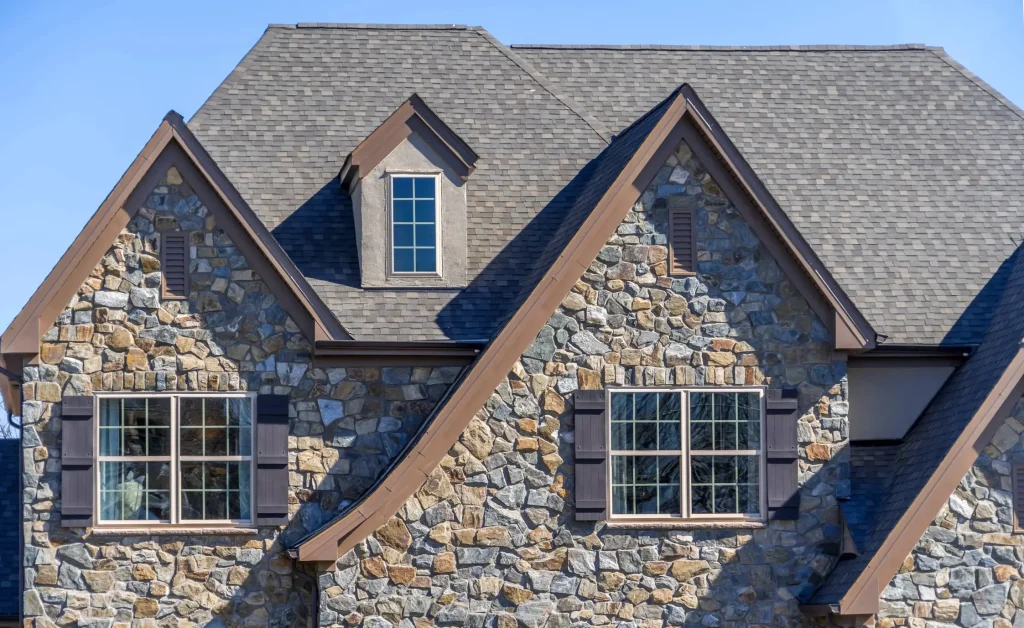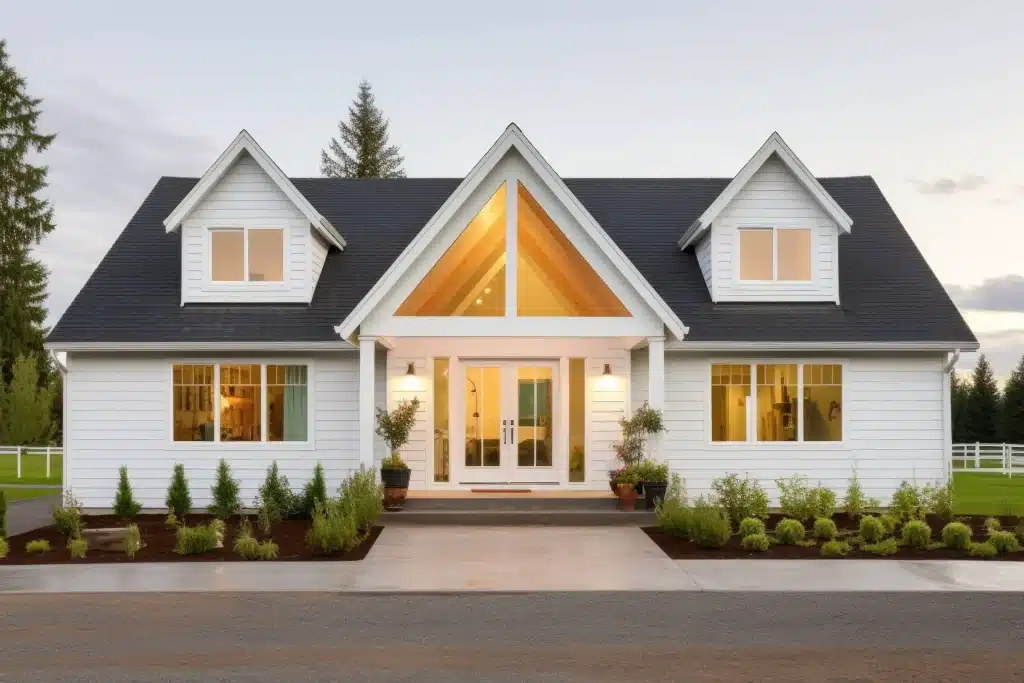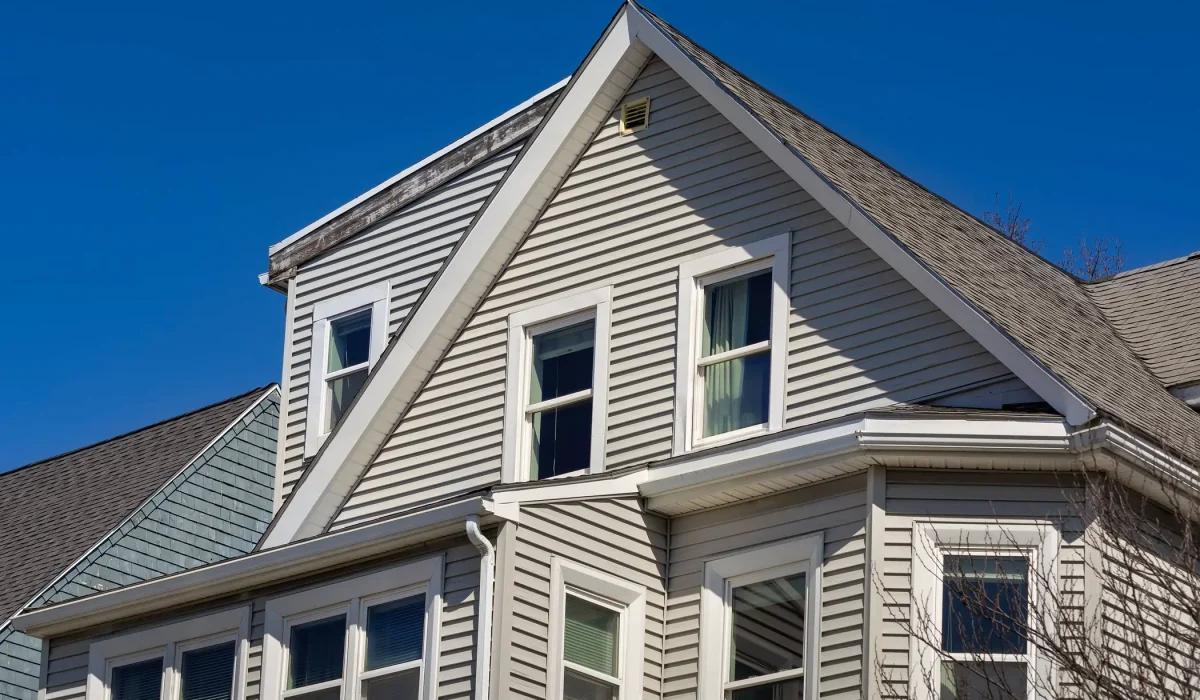A roof is a crucial part of any building as it protects from various elements of nature. There are different types of roofs such as flat, gable, hip, mansard, shed, and pitched. Each type has its unique characteristics and is suitable for different architectural styles and climates. What is a pitched roof? A sloping roof that has two or more angled surfaces meeting at a peak. It allows debris to slide off the roof.
Let’s learn more about pitched roofs.

Why is a Roof Important?
The primary function of a roof is to shield the building and its occupants from external elements such as rain, snow, wind, and sunlight. It also helps maintain the structural integrity of the building and ensures proper insulation, preventing heat loss or gain.
What is a Pitched Roof?
A pitched roof is a sloping roof that has two or more angled surfaces meeting at a peak. This design allows water, snow, and debris to easily slide off without accumulating and causing damage. Pitched roofs are common in areas with heavy rainfall or snowfall.
What Are the Components of a Pitched Roof?
A pitched roof consists of several components, including:
- Roofing materials: These can include shingles, tiles, metal sheets, or thatch, depending on the desired aesthetics, durability, and budget.
- Rafters: These are the sloping beams that provide structural support and carry the weight of the roof.
- Roof trusses: Trusses are triangular frames that reinforce the roof structure and distribute the load evenly.
- Underlayment: This layer acts as a waterproof barrier between the roofing material and the roof deck.
- Flashings: Flashings are metal strips used to seal gaps and prevent water leakage at vulnerable points such as chimneys, vents, and skylights.
- Soffit: The soffit is the underside of the roof’s overhang and helps with ventilation.
- Fascia: The fascia is a horizontal board that covers the ends of the rafters, providing support for the lower edge of the roof.
- Gutters and downspouts: These collect rainwater and direct it away from the building to prevent water damage.
Types of Pitched Roofs
Pitched roofs come in various styles, including:
- Gable roof: This is the most common type characterized by two sloping sides meeting at a ridge or peak.
- Hip roof: A hip roof has four sides sloping downwards towards the walls, with no vertical ends like a gable roof.
- Mansard roof: This style features a double slope on all four sides, providing additional living space in the attic.
- Gambrel roof: Gambrel roofs resemble mansard roofs but have a steeper lower slope and a shallower upper slope.
- Saltbox roof: A saltbox roof is asymmetrical, with one side sloping almost vertically and the other sloping gently.

Benefits of a Pitched Roof
Pitched roofs offer several advantages, such as:
- Enhanced water and snow-shedding capability
- Increased durability and longevity
- Better aesthetics and architectural appeal
- Improved ventilation due to the sloping design
- Flexibility in choosing roofing materials
Check out the video below about why the pitch of a roof is important.
Other Recommended Maintenance
Now that you know about pitched roofs, let’s take a look at a few other areas of recommended maintenance. One of those is how long it takes to replace a roof. It will depend on the damage that is done, the type of roof, the size, the weather, and the materials. The completion time ranges from 1-14 days.
Another is if insurance will cover a 15-year-old roof. The answer is yes, most of them will if there is no damage to the roof. Many companies will insure for up to 20 years or longer. However, most roofs last from 15-100 years depending on where you live, damage, and maintenance.
Lastly, roofing felt is important in a home. This is because it is waterproof, repels water, and keeps snow and ice from penetrating the roof decking. This on a home will keep the water out and the plywood dry.
When Do I Call a Professional?
It is advisable to call a professional when you notice signs of roof damage, such as leaks, sagging, or missing shingles. Additionally, you need a new roof installation or replacement. Also, if you have roof repairs that require specialized knowledge or equipment, then it may be a good time to call a professional for help. Lastly, if you want expert advice on roofing materials, designs, or maintenance, then you need to reach out to a professional.
Conclusion
A pitched roof is a popular choice for many buildings due to its practicality and visual appeal. It offers excellent protection against various weather elements, ensures proper drainage, and enhances the overall durability of the structure. When dealing with any roofing concerns, it is essential to consult a professional to ensure a safe and reliable solution. While you are taking care of your roof or deciding on the next type of roof you would like, reach out to Edifice Inspections in Peachtree Corners, GA for a home inspection.


1 Comment
Comments are closed.